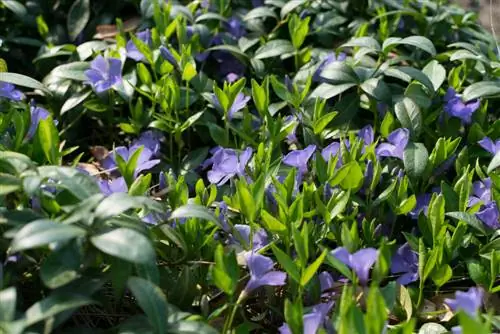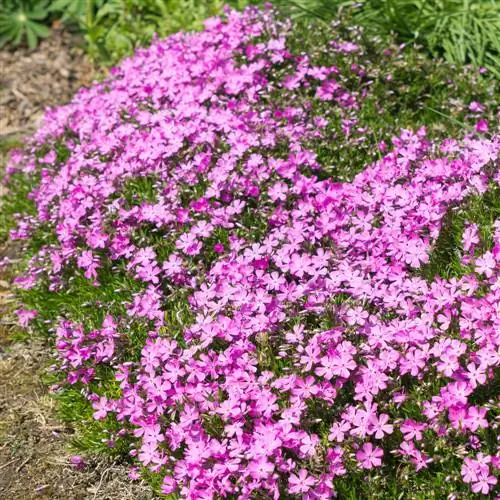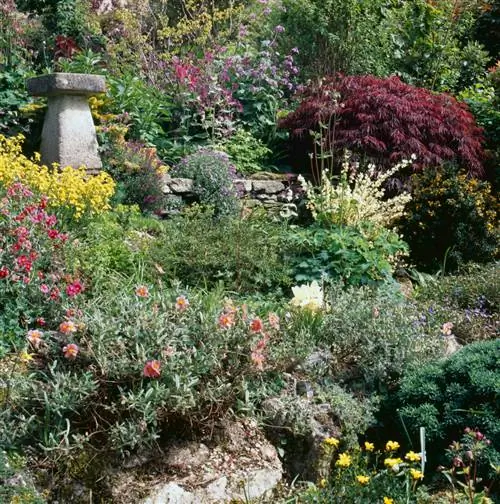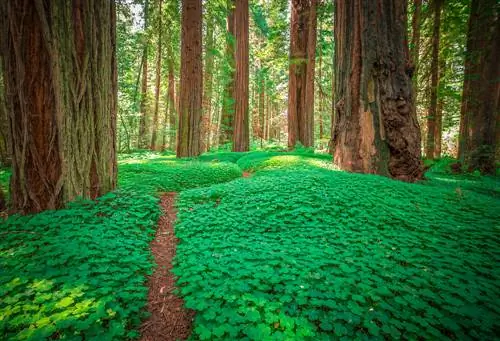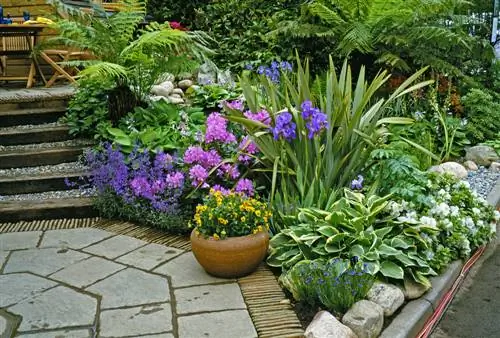- Author admin [email protected].
- Public 2023-12-16 16:46.
- Last modified 2025-01-23 11:22.
Anyone who creates new beds knows the problem: there are large gaps between the perennials in which weeds can settle unhindered. These can be quickly closed with ground cover. The low-growing ornamental plants are also particularly suitable for giving a front garden or a slope a well-kept appearance.
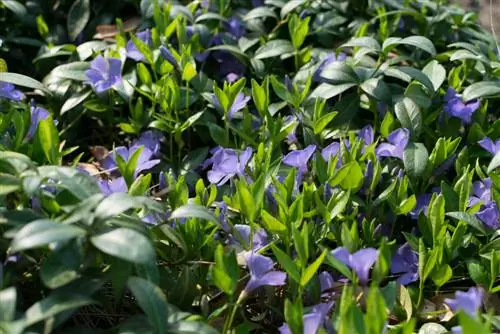
How to design a garden with ground cover plants?
For a successful garden design with ground cover plants, combine different species such as evergreen and flowering varieties. Pay attention to suitable light requirements, plant at the recommended distance, cut back after planting and add other perennials or small trees if necessary.
Ground cover: What varieties are there?
Flowering plants that cover the ground enchant with a true splendor of flowers. Evergreen, flat-growing plants form a rather reserved, sometimes inconspicuous flower flora and impress with the beauty of the foliage.
We have put together the most common ground cover plants for you in the following table:
| Evergreen ground cover | Flowering ground cover plants |
|---|---|
| Small periwinkle (Vinca minor) | Balkan cranesbill (Geranium macrorrhizum) |
| Foam flower (Tiarella cordifolia) | Blue cushion (Aubrieta hybrids) |
| Ysander/Fat Man (Pachysandra terminalis) | Blue-red Stone Seed (Lithospermum purpurocaeruleum) |
| Evergreen creeping spindle (Euonymus fortunei) | Ground cover roses (pink) |
| Spotted lungwort (Pulmonaria officinalis) | |
| Cushion soapwort (Saponaria ocymoides) | |
| Prickly nut (Acaena) | |
| Carpet golden strawberry (Waldsteinia ternat) | |
| Carpet phlox (Phlox subulata) |
You can find many other types of ground cover in specialist stores. When purchasing the plants, make sure that the light requirements of the varieties you choose match the future location.
Combine ground cover plants
A large area planted with just one type of ground cover may look wonderfully green and easy to care for, but it can seem very boring. Ground cover plants can easily be combined with each other, but also with other perennials and small trees. An interesting effect can be achieved through color contrasts. If you limit yourself to just one color, this can be extremely attractive, as the different flower shapes come into their own.
Planting ground cover plants
So that the ground cover quickly forms a dense carpet that is impenetrable to weeds, you must pay attention to a few points when planting:
- Planting time for ground cover is late summer into autumn. During this time, the weeds grow more sparsely and the ornamental plants can take root unhindered until next spring.
- Before planting the perennials, carefully remove all root weeds.
- Loose the soil thoroughly.
- Distribute about two liters of mature compost per square meter of bed area and incorporate the fertilizer.
- Heavy clay soils are additionally improved with sand.
- Lay out the pots on the surface at the recommended planting distance.
- Do not unpot ground cover until shortly before planting so that the root ball does not dry out.
- Dig a small hole with the hand shovel (€4.00 on Amazon) and insert the entire ball of the perennial.
- Press well and pour.
Pruning after planting
After planting, the ground cover plants are cut back by at least half. This means they sprout more vigorously, branch better and the open area becomes overgrown more quickly.
Tip
When choosing ground cover, please remember that not all plants grow so densely that they suppress weeds. This applies, for example, to ground cover roses, which grow creeping and form beautiful carpets of flowers, but cover the substrate rather loosely.

